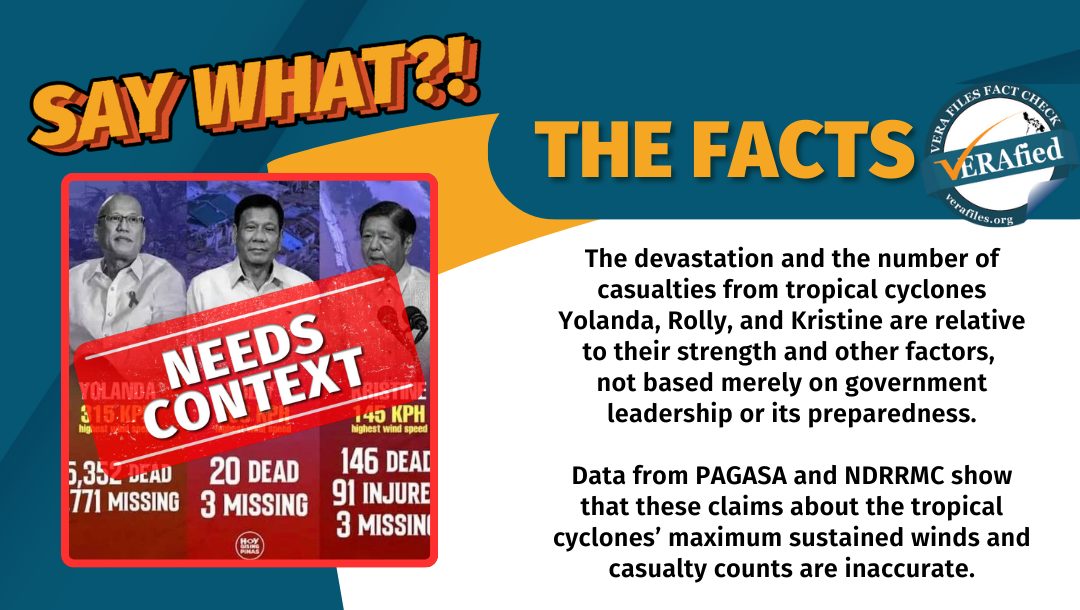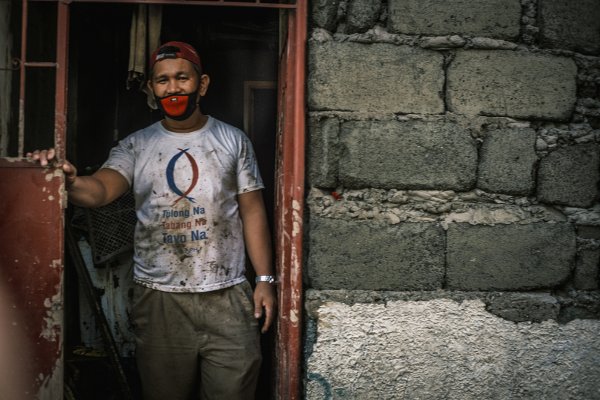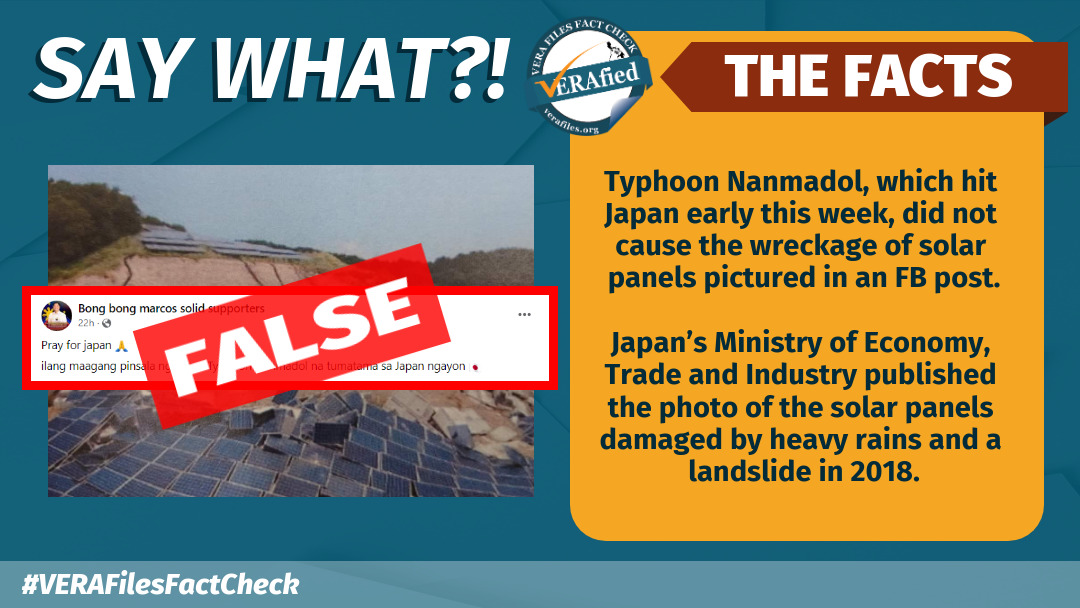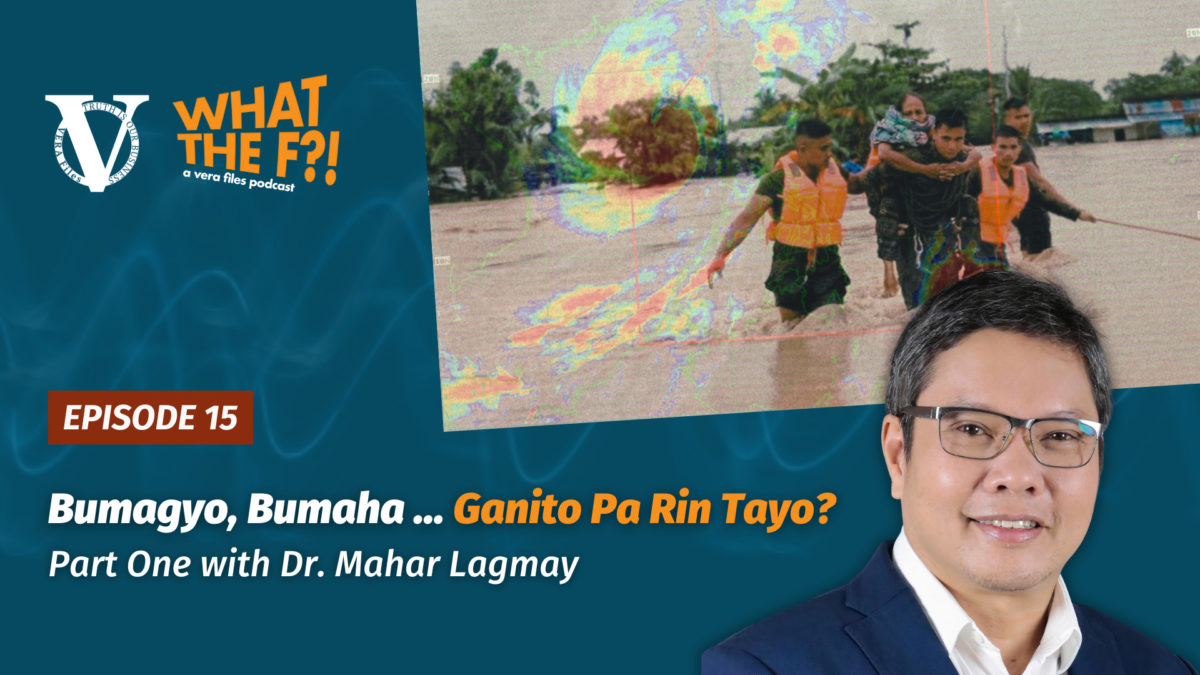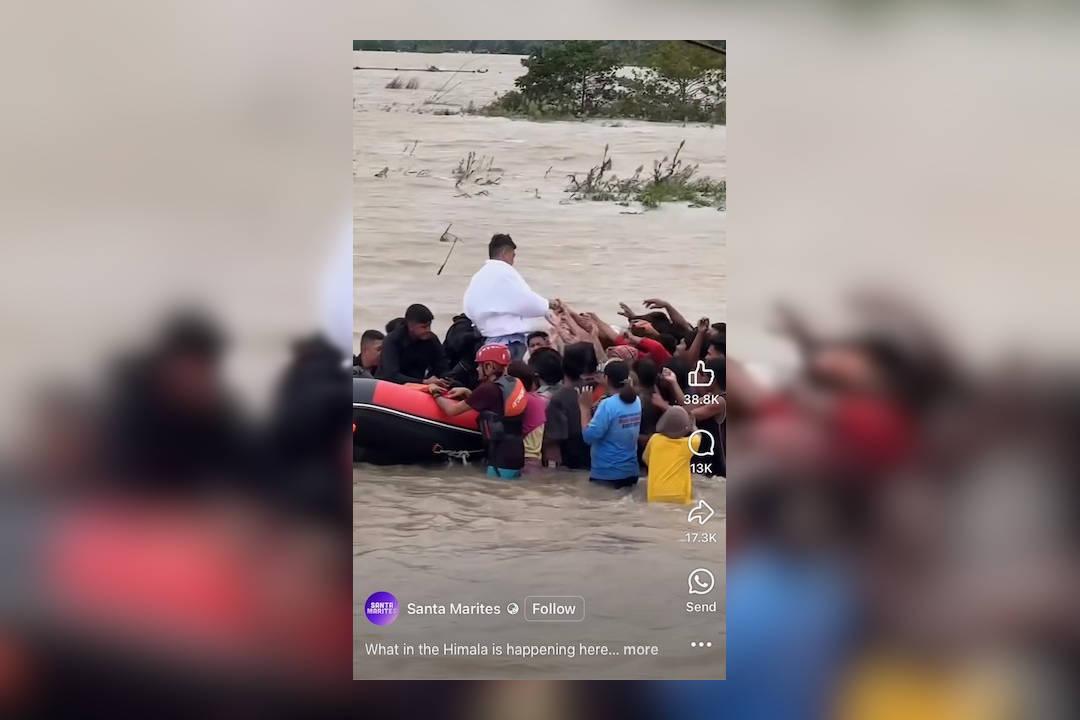A Facebook (FB) page posted a graphic comparing the death tolls from three typhoons that struck the country during the time of former presidents Benigno “Noynoy” Aquino, Rodrigo Duterte and the current administration of President Ferdinand Marcos Jr.
The comparison implied that Duterte is the best leader based on the least number of deaths and missing people. It also implied that calamity damage from tropical storms is based more on government response, rather than the cyclone”s actual strength.
First published by FB page MindaVote on Nov. 4, the graphic appeared with the following caption: “If a leader knows what he’s doing, calamity damage will not be as intense.”
This needs context. The devastation and the number of casualties from those weather systems being compared are relative to the storm’s strength and other factors, not based merely on government preparedness and response.
“Ang bawat bagyo ay magkakaiba sila, depende kung saan siya tumama, depende sa track. Kung highly populated ang area na tinamaan, marami talagang maaapektuhan,” Joey Figuracion, a meteorologist at the Philippine Atmospheric, Geophysical and Astronomical Services Administration (PAGASA), told VERA Files Fact Check in a Nov. 13 phone call.
(Every tropical cyclone is different depending on where it makes its landfall, depending on its track. If it affects a highly-populated area, a lot of people will be affected.)
“Kung ang LGU na namumuno ay mayroon programa para sa disaster mitigation, isa iyon sa tinitignan ding [factors for avoiding casualties]. Ngunit pero in terms of bagyo, kung may kakaiba silang characteristic, hindi mo rin talaga siya maa-anticipate at mapaghahandaan,” Figuracion said.
(If the incumbent local government unit has a program for disaster mitigation, that would be one of the [factors for avoiding casualties]. But in terms of tropical cyclones, if they have a special characteristic, you cannot anticipate and prepare for them.)
While most of the deaths from Typhoon Yolanda (international name: Haiyan), which hit the country in 2013, were due to the storm surge it caused, with Typhoon Rolly (Goni) in 2020, it was the flooding. In the case of tropical storm Kristine, it was due to the landslides it caused.
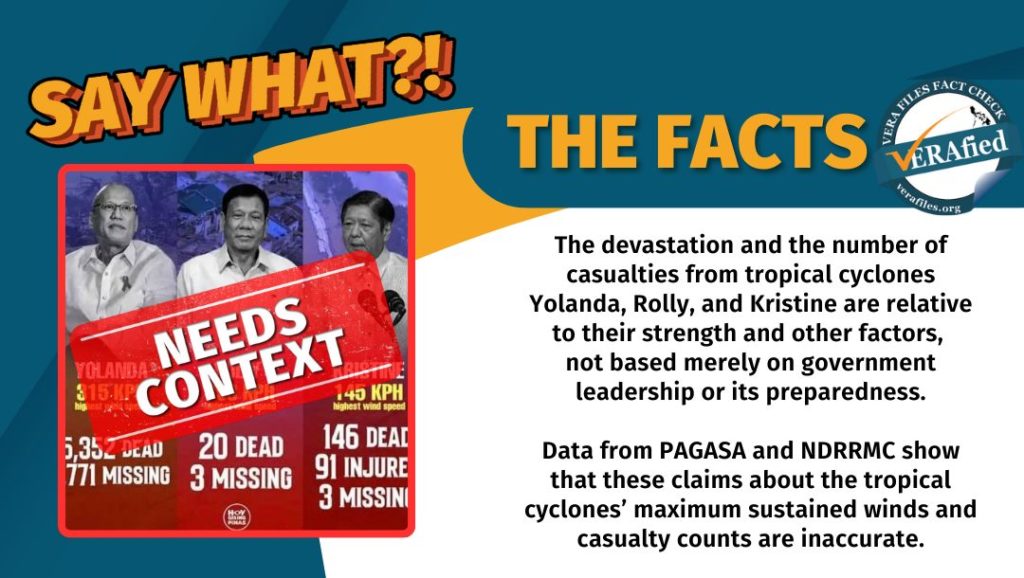
According to the Handbook of Coastal Disaster Mitigation for Engineers and Planners, Yolanda as the fastest typhoon on record struck the island of Leyte in Nov. 2013 caused the largest storm surge in the recorded history of the Philippines with a devastation characterized as “almost unprecedented in the modern era.”
“Si Yolanda is.. Yung area na tinamaan niya highly susceptible to storm surge, at marami din ang population niya. Kung si Yolanda ay tumama sa Northern Luzon hindi magiging ganoon kalakas ang epekto niya,” Figuracion said.
([Super Typhoon Yolanda is… the area it affected is highly susceptible to storm surge, and it has a dense population. If Yolanda hit Northern Luzon, it wouldn’t have created such an effect.)
But the torrential rains brought by super typhoon Rolly that made a landfall on Catanduanes island in November 2020 caused intense rains in the CALABARZON area that led to severe flooding in Quezon Province and Marinduque, not a storm surge.
Meanwhile, severe tropical storm Kristine (international name: Trami) made landfall over Isabela Province located in Northern Luzon last month. It brought in over a month’s worth of rain in areas like Albay and Daet, Camarines Norte, according to PAGASA.
A Facebook user requested VERA Files Fact Check to debunk this claim using our Messenger misinformation tip line.
Rappler also debunked the same claim.
The graphic in question also carried the following information:
The figures for the “highest wind speed” or maximum sustained winds are inaccurate, according to data obtained from the PAGASA and the U.S. Joint Typhoon Warning Center (JTWC):
Data from the National Disaster Risk Reduction Management Council (NDRRMC) for Super Typhoons Yolanda and Rolly, and Severe Tropical Storm Kristine also shows that the death tolls shown in infographics are all inaccurate:
The post by FB page MindaVote (created on Feb. 27, 2015) got a total of over 31,119 reactions, 4,668 comments, and 21,025 shares. It appeared three days after President Ferdinand Marcos Jr. declared Nov. 4 as a day of national mourning for victims of Severe Tropical Storm Kristine.
Other FB pages such as Conservative Philippines (created on July 22, 2016), Bisaya Avenue (created on Jan. 24, 2018), Historiador Exclusivo (created on Dec. 5, 2021) and an FB netizen reuploaded the inaccurate content, garnering a total of over 10,978 interactions.
